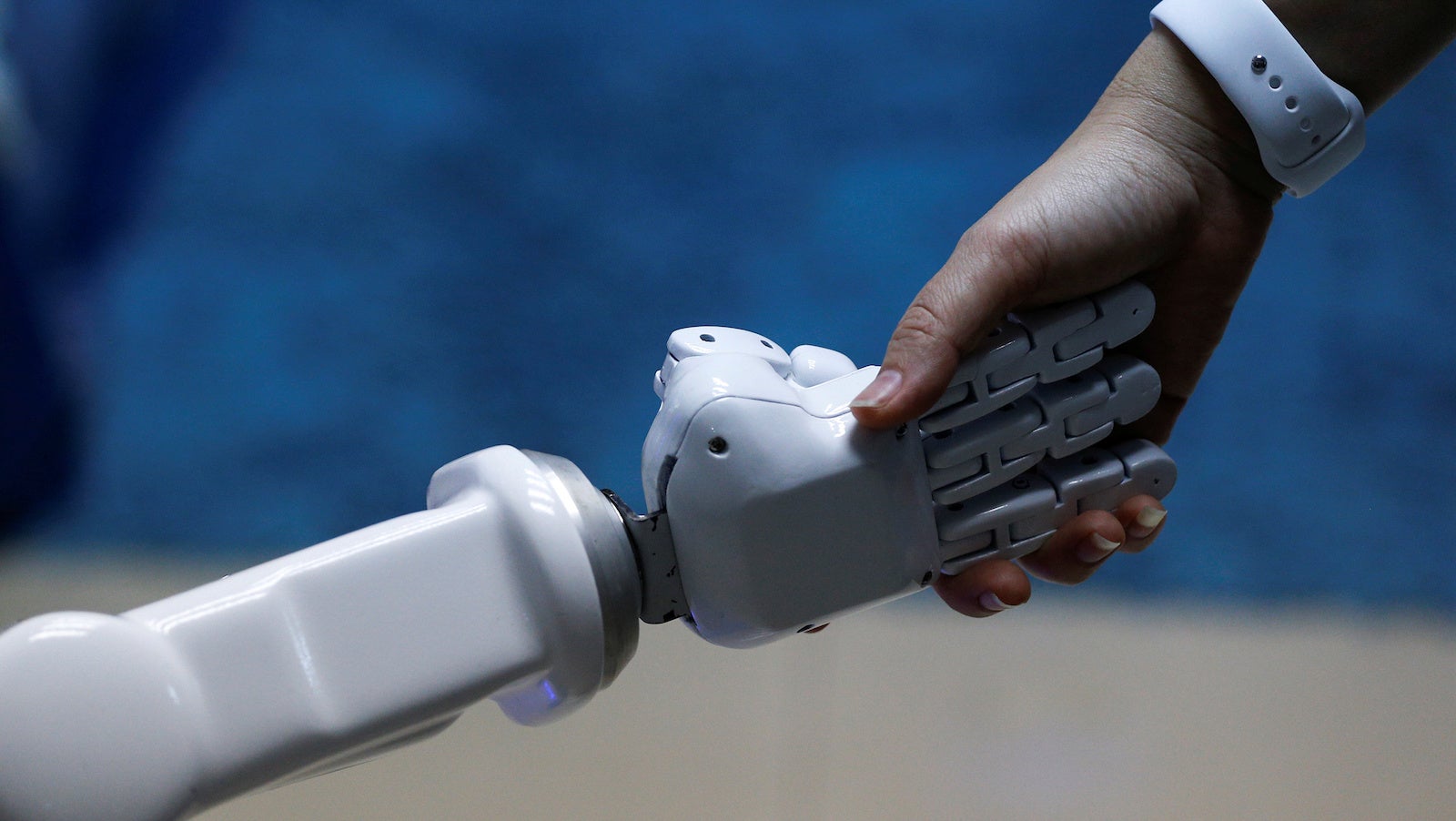How to win friends and influence people… using robots
Despite being trapped in Moscow, NSA whistleblower Edward Snowden often ambles through meeting rooms and conference halls in New York City. He does so using the same technology that lets 11-year-old Lexie Kinder, housebound with an incurable heart condition, wander around a South Carolina school and take classes with her peers.


Despite being trapped in Moscow, NSA whistleblower Edward Snowden often ambles through meeting rooms and conference halls in New York City. He does so using the same technology that lets 11-year-old Lexie Kinder, housebound with an incurable heart condition, wander around a South Carolina school and take classes with her peers.
Advances in tele-operated robots are now allowing people who are confined by circumstance to have a presence at a whole range of public events. They attend weddings and funerals, enjoy conferences and festivals, and even, at a more mundane level, commute to work without ever leaving their homes.
At the moment, these robot representatives are really just screens and cameras on wheels—driven remotely by users with keyboards and joysticks. The wheels allow the screen to be moved around, and the camera allows the user to see and hear others.
However, as anyone who has ever used Skype to attend a meeting will tell you, while having your face on a screen can certainly give you a presence, it’s not the same as actually being there. At the very least, the experience is somewhat disembodied. No hands to gesture with or to touch. Limited sensory channels for experiencing a real connection with other people.
Being There is a recent research project that has been looking at how we can draw on developments in digital technologies to enhance the experience of being there in public space. We have explored the psychology of how we connect to others in public; of how gestures and gaze convey information about intentions and feelings; and how touch can shape the sense of trust in humans and technology.
Our research seeks to improve the quality of interactions between the robot proxy and the humans it comes into contact with, as well as to allow the user to trust robots more when they act as our representative. Using telepresence technology with the Nao robot platform, which includes the capability for gesture and touch, we have been looking at how we might improve the human-robot experience in public spaces. This could work by developing technology that means the robot recognizes human non-verbal behaviors, expressions, and personality, and picks up gestures, visual cues, and body language.
In doing so we have also been developing capabilities in remote emotion sensing and in tracking objects in public space. Both of these are important technologies for allowing a remote robot operator to participate effectively and to experience events to the full. If we can capture and analyze the emotions of people in public spaces in real time and convey that back through the robot to the remote operator, we can enhance the experience of being there in person.
If the robot knows where it is in relation to other objects with a high degree of accuracy, it can navigate with confidence and promote safety and security. Giving robot proxies the ability to sense the environment on our behalf raises all sorts of interesting ethical and privacy questions. When we think about robots, we can easily conjure up a dystopian future where autonomous machines replace or enslave us.
Controlling the controllers
However, the far more pressing danger comes from what we are prepared to reveal about ourselves. The data that can be leveraged to enhance the performance of a robot proxy can also be used in ways that threaten our privacy and security. Our robot proxies will, as a matter of course, be gathering data about us and about the environments they find themselves in. The danger comes not from the robots, but from the way the technology itself is engineered.
Perhaps the most obvious concern is the one where the teleoperation system is compromised and people use the robot proxies to wander around places that they should not be able to access. Then there is the question of the kinds of information that a robot proxy could or should be allowed to collect about others.
Finally, there is the question of what robot proxies can know about the people who use them and who that information might be shared with. This complex set of questions has been at the heart of our interdisciplinary project.
Digital technologies can be used to enhance the public realm by creating new ways to participate for those who might be excluded, and improving the experiences of “being there” in public space for all. However, each potential advance is accompanied by a corresponding question about its ethical implications.
As robot technology becomes increasingly versatile and able to represent us in new and more sophisticated ways, so we will need to think through what the limits to the trade off between utility and privacy should be.